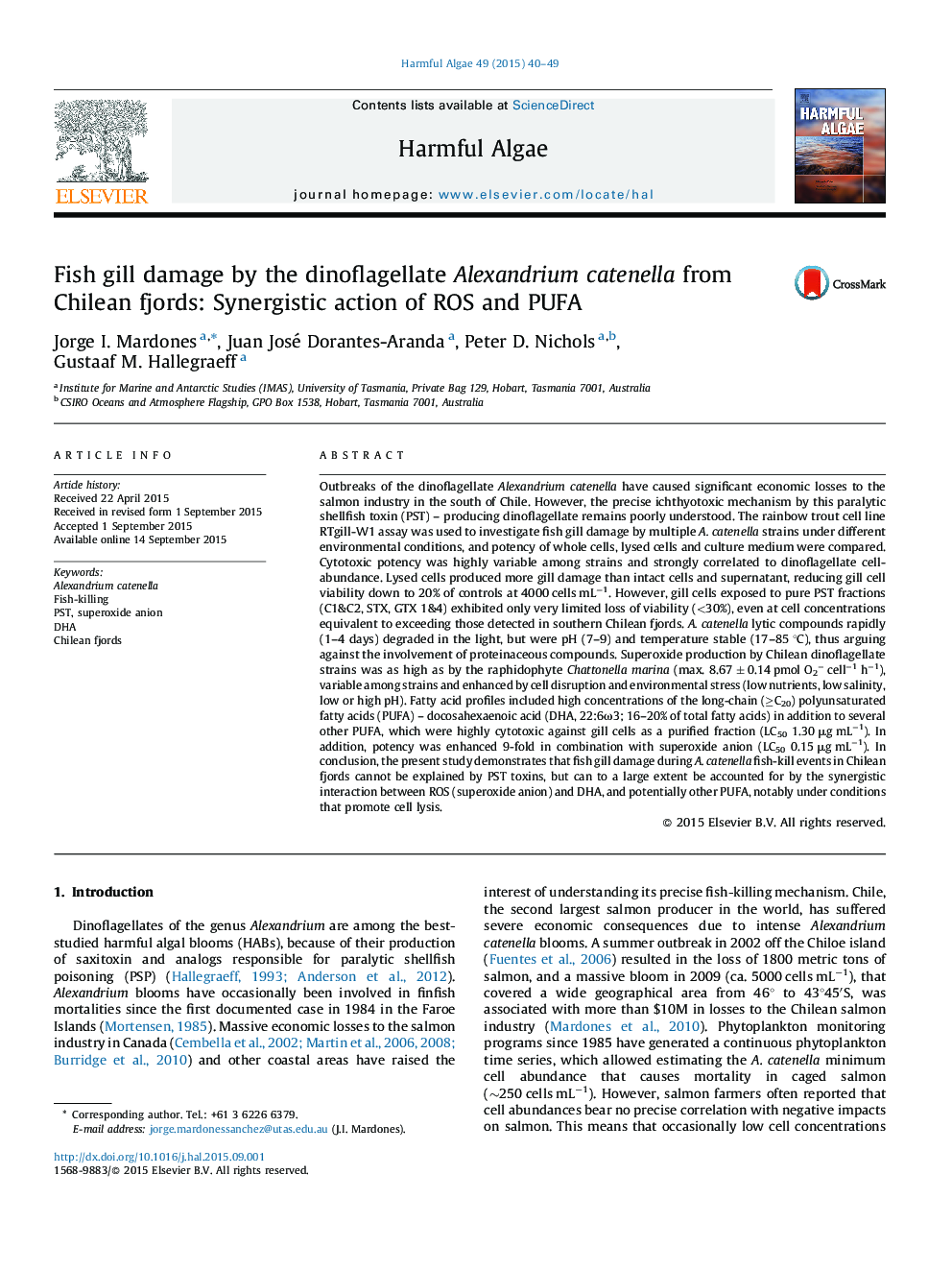| Article ID | Journal | Published Year | Pages | File Type |
|---|---|---|---|---|
| 4545217 | Harmful Algae | 2015 | 10 Pages |
•Alexandrium Chilean strains are high ROS producers equaling Chattonella ROS production.•Alexandrium catenella Chilean strains are high PUFA (DHA) producers.•Gill damage can be explained by the synergistic interaction between ROS and PUFA, but no role for PST.
Outbreaks of the dinoflagellate Alexandrium catenella have caused significant economic losses to the salmon industry in the south of Chile. However, the precise ichthyotoxic mechanism by this paralytic shellfish toxin (PST) – producing dinoflagellate remains poorly understood. The rainbow trout cell line RTgill-W1 assay was used to investigate fish gill damage by multiple A. catenella strains under different environmental conditions, and potency of whole cells, lysed cells and culture medium were compared. Cytotoxic potency was highly variable among strains and strongly correlated to dinoflagellate cell-abundance. Lysed cells produced more gill damage than intact cells and supernatant, reducing gill cell viability down to 20% of controls at 4000 cells mL−1. However, gill cells exposed to pure PST fractions (C1&C2, STX, GTX 1&4) exhibited only very limited loss of viability (<30%), even at cell concentrations equivalent to exceeding those detected in southern Chilean fjords. A. catenella lytic compounds rapidly (1–4 days) degraded in the light, but were pH (7–9) and temperature stable (17–85 °C), thus arguing against the involvement of proteinaceous compounds. Superoxide production by Chilean dinoflagellate strains was as high as by the raphidophyte Chattonella marina (max. 8.67 ± 0.14 pmol O2− cell−1 h−1), variable among strains and enhanced by cell disruption and environmental stress (low nutrients, low salinity, low or high pH). Fatty acid profiles included high concentrations of the long-chain (≥C20) polyunsaturated fatty acids (PUFA) – docosahexaenoic acid (DHA, 22:6ω3; 16–20% of total fatty acids) in addition to several other PUFA, which were highly cytotoxic against gill cells as a purified fraction (LC50 1.30 μg mL−1). In addition, potency was enhanced 9-fold in combination with superoxide anion (LC50 0.15 μg mL−1). In conclusion, the present study demonstrates that fish gill damage during A. catenella fish-kill events in Chilean fjords cannot be explained by PST toxins, but can to a large extent be accounted for by the synergistic interaction between ROS (superoxide anion) and DHA, and potentially other PUFA, notably under conditions that promote cell lysis.
